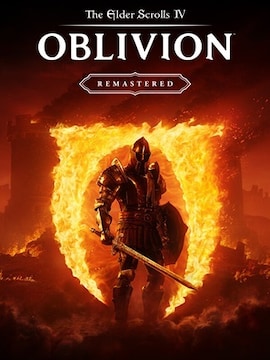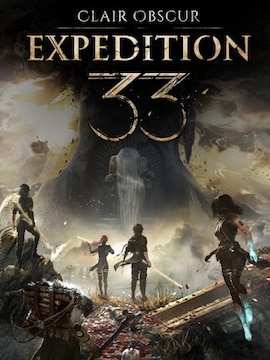With the newest part of Sid Meier’s Civilization franchise freshly out, we decided to take a stroll down memory lane and reminisce about the game series’ history.
Civilization I: The Game That Started It All
1991 was the year when the beloved series began, kickstarting the 4X (eXplore, eXpand, eXploit, eXterminate) genre.
There have been other turn-based strategy games before—Sid Meyers himself recently worked on Railroad Tycoon—but Civilization remained the golden standard for many years after its release.
What made it so revolutionary? For one, its addictive “one more turn” gameplay loop kept gamers stuck to their computers for long hours.
Even though it came out over 30 years ago, Civilization already contained most of the core mechanics iterated in the later parts, laying the groundwork for the series’ (and the genres’) future development. From settlers who found new settlements to the technology tree, the systems introduced in the original Civilization would feel familiar even to the latecomers to the genre.
Is it the best part of the series? Probably not anymore. After all, it is rather dated, and its successors did a lot to improve upon the template it provided. However, it was a revolutionary game for its times, and no other part of the series was as influential as the very first one.
Civilization II: Expanding the Strategy Genre
Five years after its release, Civilization received a sequel. This time, the developers collected feedback from fans and compiled a list of desired features and improvements. For the most part, Civilization II polished the already-existing features, refined the enemy AI behaviour, and reworked the balance.
But that doesn’t mean it didn’t have anything new to offer. While Civilization already offered several win conditions, Civilization II put more emphasis on the peaceful routes by refining the diplomacy mechanic and adding the wonders of the world.
It also improved the graphics and introduced the isometric view that is a part of the series to this day.
It’s worth noting that Civilization 2 was one of the first triple-A games released on Windows 95, which undoubtedly increased its reach. As a result, the sequel sold twice as many copies as the original.
Civilization III: Introducing Culture and Strategic Depth
So far, the differences between civilizations you could choose were mostly cosmetic. Not so in Civilization III. For the first time in the series’ history, each of the civs received its own starting bonus that could influence the playstyle.
In addition, Civilization 3 focused on Culture and made it possible to win via a cultural victory.
Among other new and expanded mechanics were citizen contentment, corruption and production waste. Some of those received a lukewarm reception, and the corruption mechanic was removed altogether from the future instalments.
Civilization III was somewhat divisive, but despite that, it was another financial success, which meant that another sequel was just a matter of time.
Civilization IV: A New Era of Gameplay and Graphics
One of the most beloved entries in the series came out in 2005. To this day, many fans consider it the best Civilization ever.
Civilization IV introduced many major changes, starting with a visual overhaul – it was developed using a dedicated 3D engine.
Gameplay-wise, Civilization IV was probably the most revolutionary part so far. The developers decided not to include any of the previous parts’ mechanics “by default”, which resulted in the removal of the divisive corruption mechanic.
On the other hand, more large-scale systems were added, the most prominent being Religion. Building on the cultural mechanics of Civilization III, this part also contained Great People and their works of art, music, and architecture.
Moreover, the military units could now be upgraded, preventing a situation known from the earlier instalments where an experienced unit of pikemen could easily defeat tanks.
Land improvements were also diversified, offering new options other than building a mine or turning the tile into farmland. Now, the map was full of different types of resources (some locked until you reached the correct era), and the player’s decision on what to do with a particular tile became more important – and interesting.
While the previous parts included multiplayer mode – although not always at launch – Civilization IV was built as a multiplayer game first. This approach resulted in a much more refined multiplayer mode which made it much more fun to play against your friends.
Civilization IV became a cultural phenomenon. Narrated by Leonard Nimoy himself, It also became the first game to win a Grammy for its iconic theme song, Baba Yetu.
Civilization V: Revolutionizing with Hex Tiles
Civilization V was the first instalment to replace the square tiles with hex tiles. This change increased the system requirements, but it also modernized the series and has been included in the following parts. The visual presentation was positively affected, allowing for more natural and appealing landscapes.
The tile shape affected combat as well, as you could now surround a tile from more sides. This became especially important due to other changes in the combat system. Most importantly, you couldn’t create the infamous “stacks of doom” – meaning you couldn’t stack a huge number of units on the same tile as their commander. This changed the dynamic of battles considerably.
Additionally, cities could now fire at approaching enemies even if no military unit was stationed there.
Civilization V also introduced city-states which could become your – or your enemies’ – allies, and potentially become a puppet state or be annexed into your empire.
Civilization VI: Refining and Expanding the Formula
Until this year’s February, Civilization VI was the most recent instalment of the series. It’s also somewhat controversial and often compared negatively to its predecessors.
One of the main reasons is the drastic shift to cartoonish visuals, a departure from the realistic style of all the previous series. The look reminded some fans of mobile games, which was not a compliment in this case.
But despite the lower user scores, Civilization VI wasn’t a bad game and successfully iterated some of the earlier games’ features.
Once again, culture came into focus, which resulted in a culture tree which mirrored the technology tree present in all parts of the game.
Additionally, this part introduced specialized districts, which housed buildings in the city.
After receiving several expansion packs and updates that brought new mechanics, like natural disasters and climate change effects, Civilization VI’s reception became much more positive than what it was on release.
Civilization VII: The Future of Strategy Gaming
This brings us to the newly released Civilization VII. Like most of the modern instalments, this one also comes with a large number of changes.
The most noticeable one is the introduction of Ages – not to be confused with eras which, while similar, were nowhere as complex as the new system.
Following the philosophy that history is like an ogre (which, in turn, is like an onion), the developers decided to play with the idea of civilizations being layered. Few real-life ancient empires made it into the XXI century, and likewise, your civilization will change throughout the three Ages in the game.
For example, you could start the game as the Roman Empire. However, the Roman civilization is exclusive to the Antiquity Age, and as you enter the Exploration Age, you will have to select a new, age-appropriate civilization. The natural choice is the Norman civilization, and then the French Empire in the Modern Age. But your decisions during the playthrough can enable you to make a less historically accurate choice and have the Roman Empire change into Ming China.
On top of this, the leaders are no longer tied to civilizations, and you can choose Harriet Tubman or Catherine the Great to lead Ancient Greece.
What’s next?
There are many more changes introduced in Civilization VII, and we leave it to you to decide if they’re beneficial or detrimental to the experience. As for us, we’re excited to give the new instalment a try and see what the future of strategy gaming shapes up.











